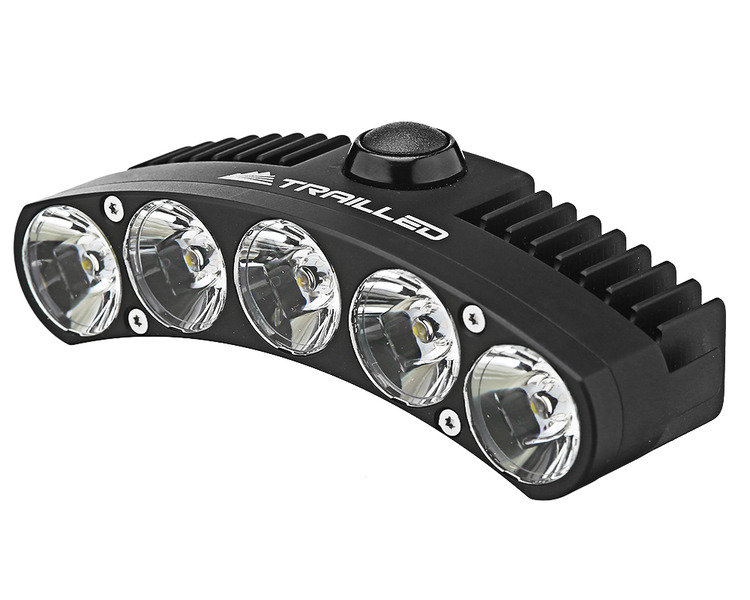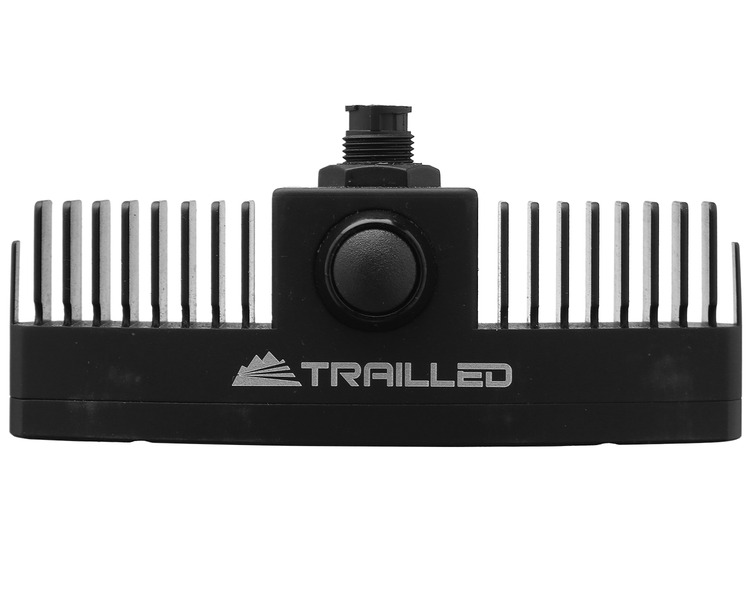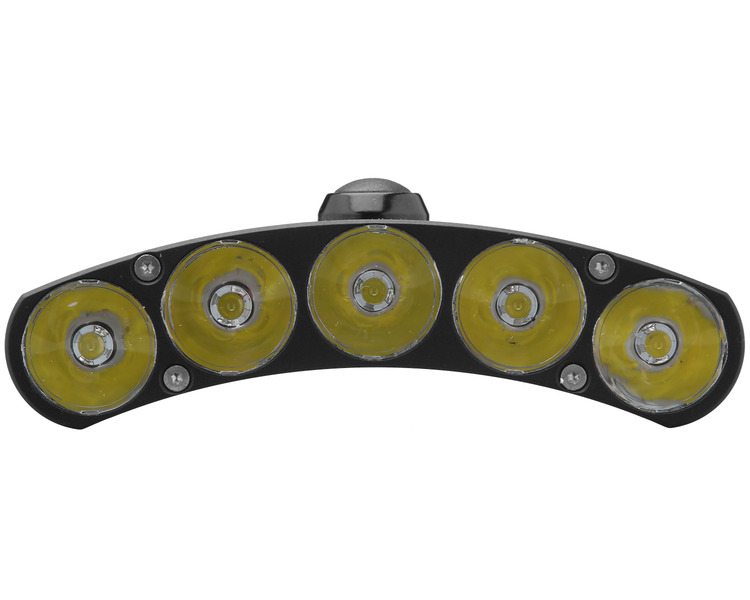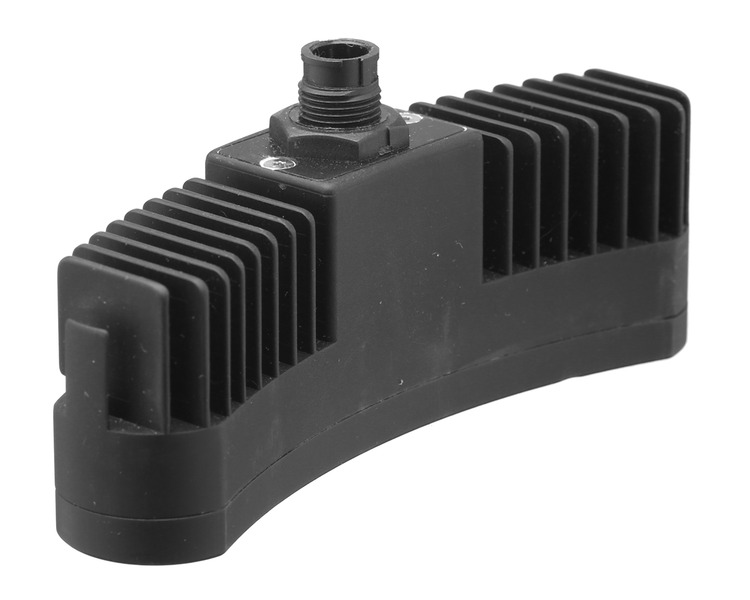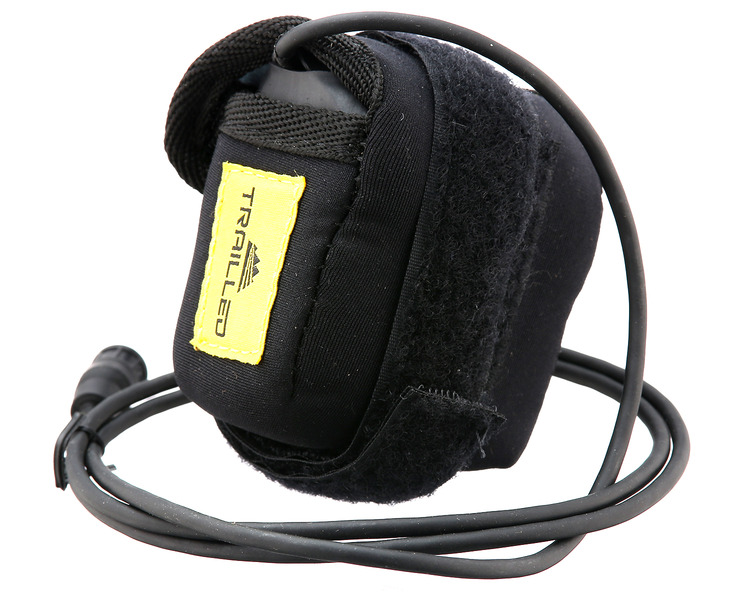Trail LED DS Light Test
Having the ability to ride in the dark opens up riding opportunities to those with a chaotic schedule. It also allows riders to hit the trails when they are less busy and stay out of the heat. Lights come in many different price points and mounting styles. The Trail LED DS is a helmet mount light that falls into the high end of the price point their MSRP is $549. This is a very well made light. I have held and used other companies lights that are close in price and their build quality is lacking in comparison.
"The DS (the light formerly known as the Dark Star) has been redesigned in the image of its BIG brother, the Halo, and maintains the same quality and attention to detail. The DS houses five of the highest performing CREE LEDs available and emits 3200 lumens. We deliver those 3200 lumens in a solid, anodized aluminum light-body weighing 100 grams. We have maintained tight control over both output and color temperature to give you maximum output with the best color rendition available in the industry.
The unique, low-profile, arched design and multiple lenses of the DS produce what we like to call MPSD (multi-point shadow definition), rendering unparalleled depth perception. The unique integrated mounting system also allows unmatched flexibility and convenience in mounting. And if all of that isn't enough, our battery packs boast a 1:1 charge ratio, meaning you only need two battery packs to run continuously.
With all Trail Led lights, no compromises have been made in materials, design or construction. Trail Led lights are all handmade in the USA, by bikers for bikers.
Bottom line--you are guaranteed not to be disappointed.
All lights come with 1 standard battery pack, 1 neoprene battery pouch, 1 bar mount, charger, and 2 mounting rings."
Specs
Lumens/Run Time:
- High - 3200 lumens - 1.5 HRS
- Low - 1500 lumens - 3.25HRS
- Emergency - 300 lumens - 16HRS
Charge Time: 1.5 hours
Battery: 285g
Light Body: 100g
Ian
Using lights is a great way to get in more riding. I have used a number of lights in the past. Once I opened the box and looked at the Trail LED DS it became apparent that what I was about to install onto the top of my helmet was something that was in a league of its own. The build quality of this light cannot be ignored. It is a solid chassis that contains 5 very powerful LED lamps. The finned aluminum body helps to cool the light and allows you to attach it to your helmet via the thick bands that come with it.
It fit very snug against my Troy Lee helmet. I used one band on the outside edge and it worked perfectly. I used the light while climbing in low settings and upon reaching the top of the trail I was surrounded by the night. At this point I put the light onto high. It was very bright and the trail I was riding just happened to be high speed. Typically during the day I can hit 25mph on it pretty easily. This night ride for me with the help from the Trail LED DS light had a max speed for me of 21mph. Considering it was full black I think that says alot about the lights power output loosing 4mph to be able to ride in the evening was well worth it.
They way back through town I was high beamed by a few cars because I forgot to turn the lights down. After the third time I finally went to the lower power setting. Those of you that do much of your riding at night could take full advantage of the lowest power setting that the DS offers.
Andrew Soto
Right out of the box the Trail LED Light was super easy to use. In the low mode the light puts off enough emission to ride down any trail. Once you turn the light on the bright mode, you might as well be riding in the day time. We were able to get away with only using the one light during our 3 hours rides with enough battery life to still pedal home. Typically these loops where about 20 miles with 2000-2500 feet of elevation.
I really liked how compact the Trail LED was, you don't even notice it on your helmet. The battery pack was quite small as well. I have used other lights and all of their battery packs where larger than the Trail LED. I was able to slide it in the Delane Camelbak with ease. If you're looking for a one light work horse, this is your light.
Overall I was very impressed with the Trail LED light. It had outstanding build quilty, was very powerful, and is one of the smallest lights I have ever used. If you put that all together into a package that puts out 3200 Lumens the Trail DS is an incredible light. If they had to improve something maybe an alternate way to mount besides the band method. This is personal prefernace and nit picking to be sure. They worked fine it was the only thing that I could find that could be improved!
Conclusion
Overall the Trail LED light proved to be a phenomenal product. It's build quality along with the power output provided us with an outstanding light. We would have no problem suggesting the Trail LED DS to a friend. The lights put out a cooler color temp than other lights we have used in the past. It keeps things natural looking during the evenings. I would guess it is somwhere around 5000 on the Kelvin scale.
Everything about the Trail LED is high class. The craftsmanship is incredible and it has performance to match. If that isn't enough they are a very green oriented company making things here in the USA. I knew these lights would be amazing from what I had read and also heard from fellow riders that have owned them. It was like getting a Porsche GT3 delivered if you are going to review it. You know it is one of the best cars on the planet but you still have to take it out and see what it can do.
Trail LED Q&A
1. How did Trail LED come to be?
Back in about 2006 I was working a more than full time job and being winter the only time I could ride was at night after dark. I had a set of Vista lights with large battery packs that you had to change every 30 minutes so for a 2 hour ride that was 4 large packs to carry and change. I happened to be Christmas shopping and went into a Sharper Image store to look for some stocking stuffers. They had a small LED flashlight about the size of a lipstick tube and don’t you know it was as bright as my bike light and had a 2 hour runtime. Unfortunately it didn’t use rechargeable batteries so I immediately went to purchase a LED bike light, funny thing is nobody made them at that time. I figured a flashlight couldn’t be too complicated so I immediately destroyed my wife’s stocking stuffer to see if I could figure out a way to run it from an external pack. During my research I discovered an online forum of other people doing the same thing. Initially they were built out of very crude designs and hand built for me and my riding buddies, then one night on a trail somebody said if they looked nicer they would buy one and Trail LED was born. Our first models were hand machined on a drill press by me and sold to the local mtb club riders. As TrailLED started to make a name for itself I taught myself some machining techniques as well as anodizing so that we could offer custom light body colors to differentiate ourselves. As Trail LED continued to grow I went from hand machining to doing the cad design and then having local machine shops do the machining of the bodies for us. Assembly has always been and always will be in house.
2. Did you guys see a niche in the lighting market for high quality lights?
Yes, we are not a cheap brand, but we are a good value. We only use the highest quality components and parts and that does cause us to be more expensive, but when traveling off-road at high rates of speed a light failure can be at the least a walk home, and at the other end a trip to the hospital. A good quality light is really cheap insurance.
3. What is your background?
Farm boy. If you couldn’t build it, repair it, or adapt it you didn’t get it.
4. What sets Trail LED lights apart from the competition?
We are the only lights designed from a helmet mount first perspective. All other lights on the market are designed to fit on your bars first and then they figure out a way to strap them to your helmet. We went backwards to that method of thinking as it is far easier from an ergonomics standpoint to adapt a helmet deigned light effectively to the bars than the other way around. For off-road riding being able to see where you are going versus where the vehicle is going is a distinct advantage.
5. What where the features you wanted your lights to have before you even began designing them?
We had three design goals with this latest generation of lights.
- No more than ¾ inch off the helmet
- Helmet mount first design
- Brightest helmet mounted light in the industry
We achieved that with our Halo model and those features along with many others as a result are available in all three models of our lights.
6. With battery technology advancing so fast will we in the near future be able to have lights that have a battery plugged into them so we can leave the cords behind?
Battery technology has actually hit a brick wall, just that the major manufacturers are now catching up. We have been using li-ion for the last 10 years, it was just cheaper and the broader market didn’t demand it until recently so others finally changed from NiMH to Li-ion. There are some things we are keeping our eye on, but in the area of high powered lights I am afraid it is going to be a while.
7. Any tricks for getting the lights to hold a longer charge or to keep the batteries running longer?
Li-Ion doesn’t have any memory effect and self-discharges very slowly. We tell our customers that if you are not going to use the lights for more than 3 months to discharge them about half way as they store better long term with a partial charge. As far as longer runtimes the big button on top makes it easy to change between low and high even with full finger winter riding gloves on. The simple act of dimming the light down during a fire road climb can lead to a significant run time increase.
8. Why bands as opposed to velcro to strap the lights down?
Our first gen lights used velcro. Velcro can be cumbersome to get tight, and the bands we use are the solution we came up with to ensure that the light gets mounted as securely as possible.
9. Are there any new projects that Trail LED is working on that you care to share?
Yes but we cannot share at this time!
10. What type of trail rocks, jumps or mixed?
My days of BMX and big air are long gone, so rocks and drops are about as adventurous as I get, however we did just hold the first ever night time enduro stage and it was a huge success both with the spectators and riders.
11. What would make the bike industry better?
The industry or the community? I guess the answer to either is a unified front on bicycle advocacy of all types.
12. Anything else our readers should know about Trail LED?
There is a lot, so the easiest way is to head over to our old Kickstarter page which has a tone of information or our website. Otherwise drop us a line and we will answer it to the best of our ability.
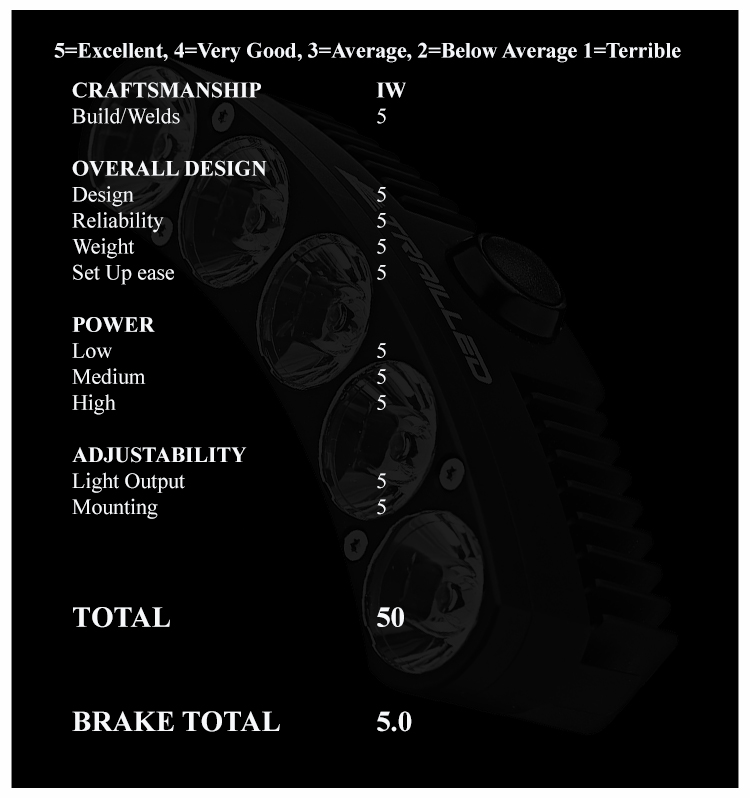
 Best Bike Light,
Best Bike Light,  Bike Light,
Bike Light,  Trail LED DS Review,
Trail LED DS Review,  Trail LED Test |
Trail LED Test |





